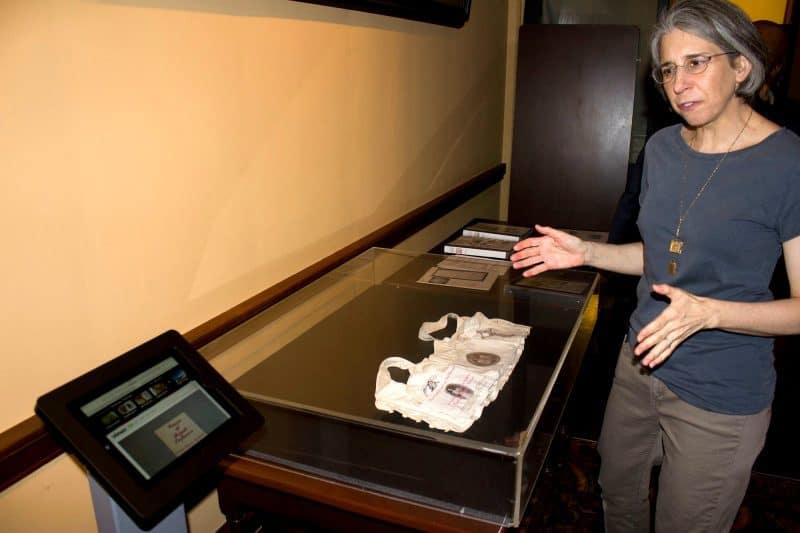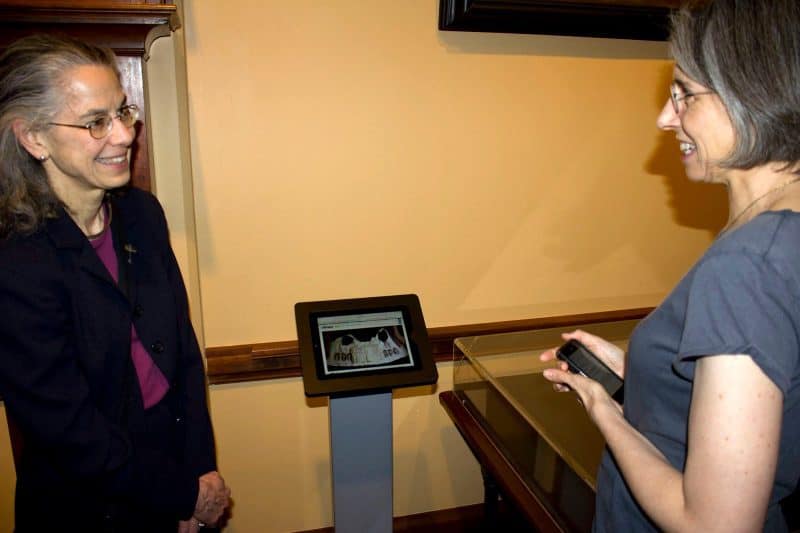The Library Company’s new Program in Women’s History (PWH) was inaugurated in style with a talk by local art historian Susan Shifrin on April 9. Thanks to a generous endowment from an anonymous donor in honor of Trustee Davida T. Deutsch, PWH will enable us to add material to the collections and sponsor events, conferences, publications, and fellowships.
The April 9 event was an opportunity to put the Library Company’s long commitment to women readers and writers into historical perspective. Dr. Shifrin traced the earliest recorded use of the Library Company by a woman to the Directors’ Minutes for May 10, 1742, which indicate that one Elizabeth North was allowed to use James Merrewether’s share (Number 71) after his death. Predictably, very few of the Library Company’s early acquisitions are by women writers, but its 1793 supplementary catalogue lists the first edition of Mary Wollstonecraft’s Vindication of the Rights of Woman (London, 1792). We can be proud on both scores.
The main focus of Dr. Shifrin’s talk related to her own experiences at the Library Company as the curator of “Picturing Women.” This 2004 multi-venue exhibition juxtaposed historical material with contemporary artwork in an effort to stimulate fresh awareness of the pressure on women to measure up to unrealistic standards of physical beauty and to avoid censure from failing to conform to gender norms. Our special guest at the event was Tamar Stone, a book artist who found inspiration from the “Picturing Women” exhibition. Ms. Stone brought one of her extraordinary “corset books” and was available to discuss her work at the reception before the talk:

Book artist Tamar Stone next to her artwork
Curator of Women’s History Connie King looks forward to planning more programs that celebrate the Library Company’s long tradition of collecting material by, for, and about women—and enabling women’s involvement in defining the ways the historical record informs the present and guides the future.

Connie King with Tammy Stone



